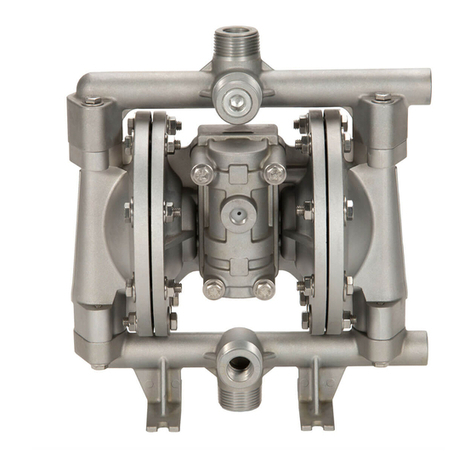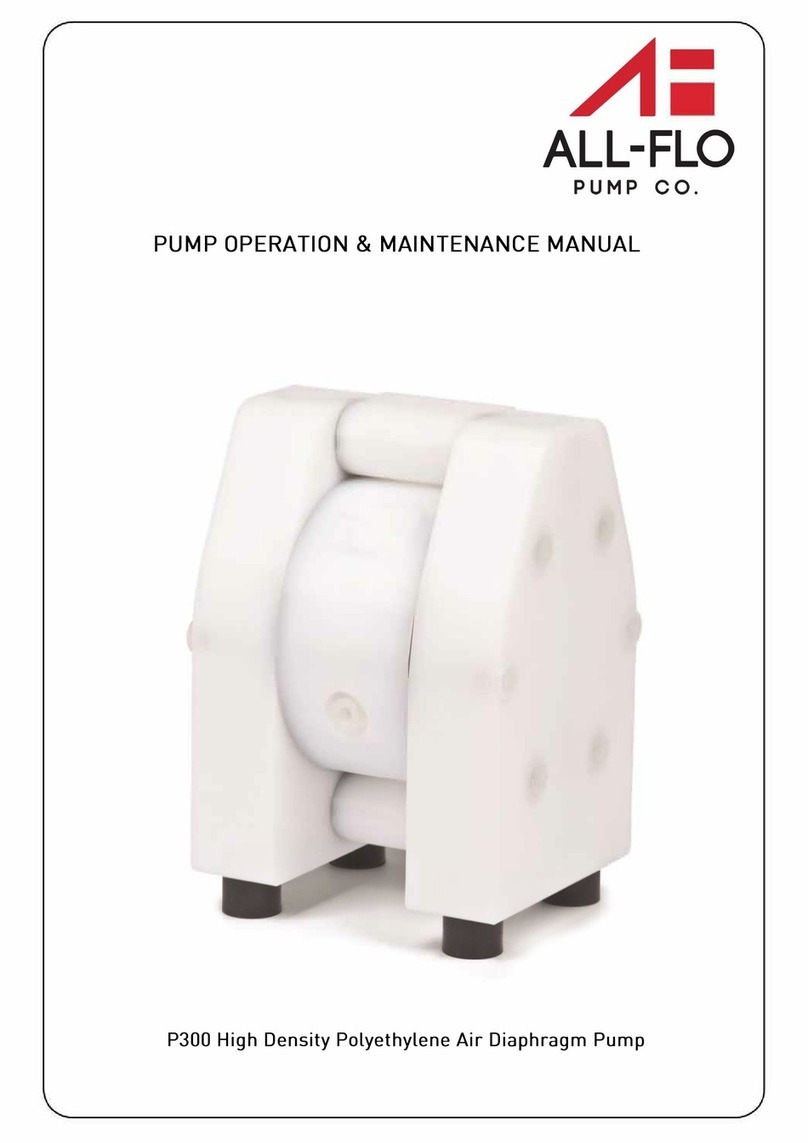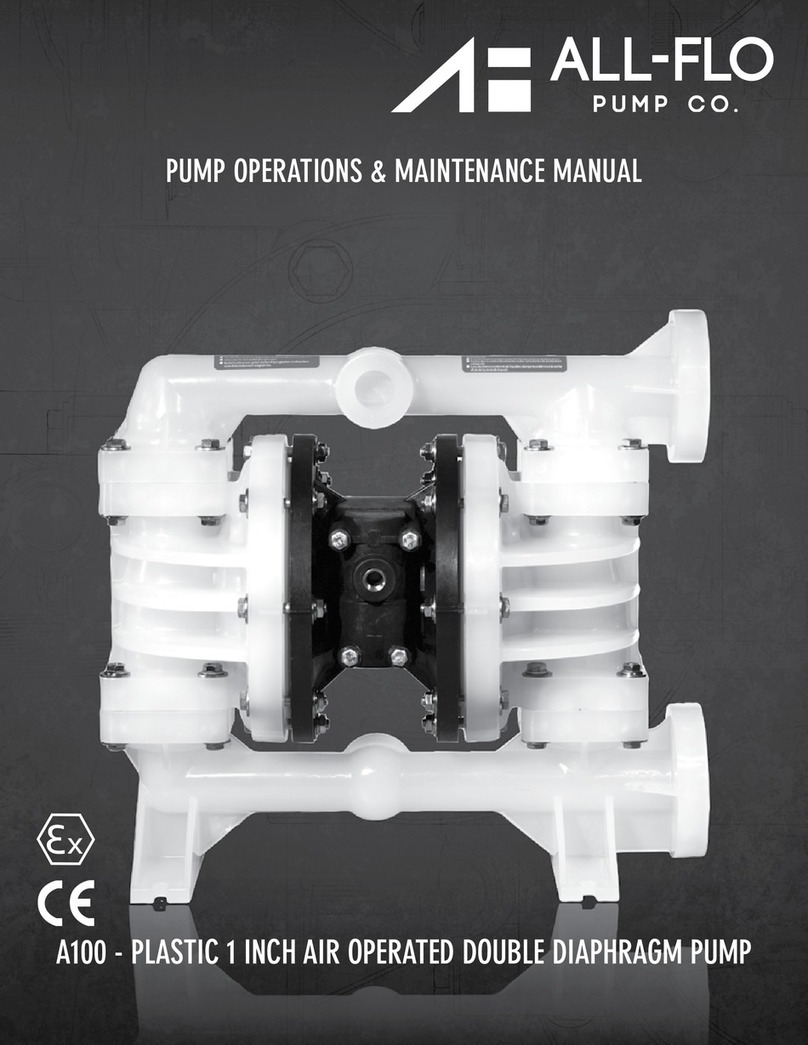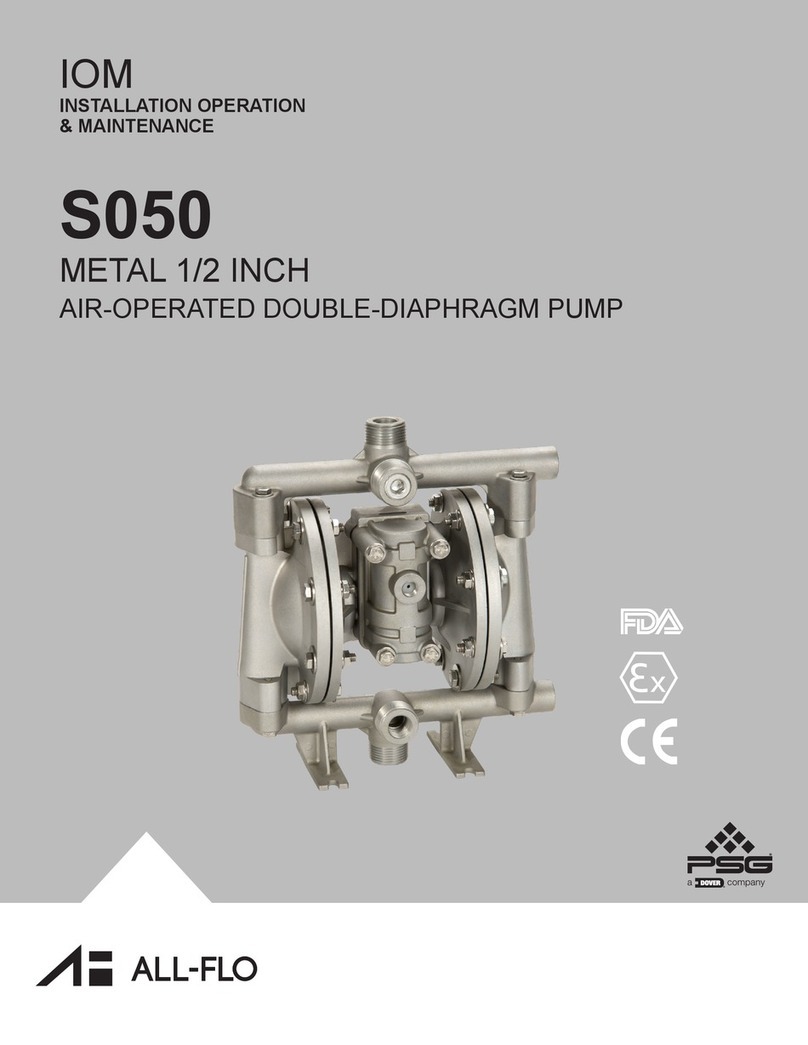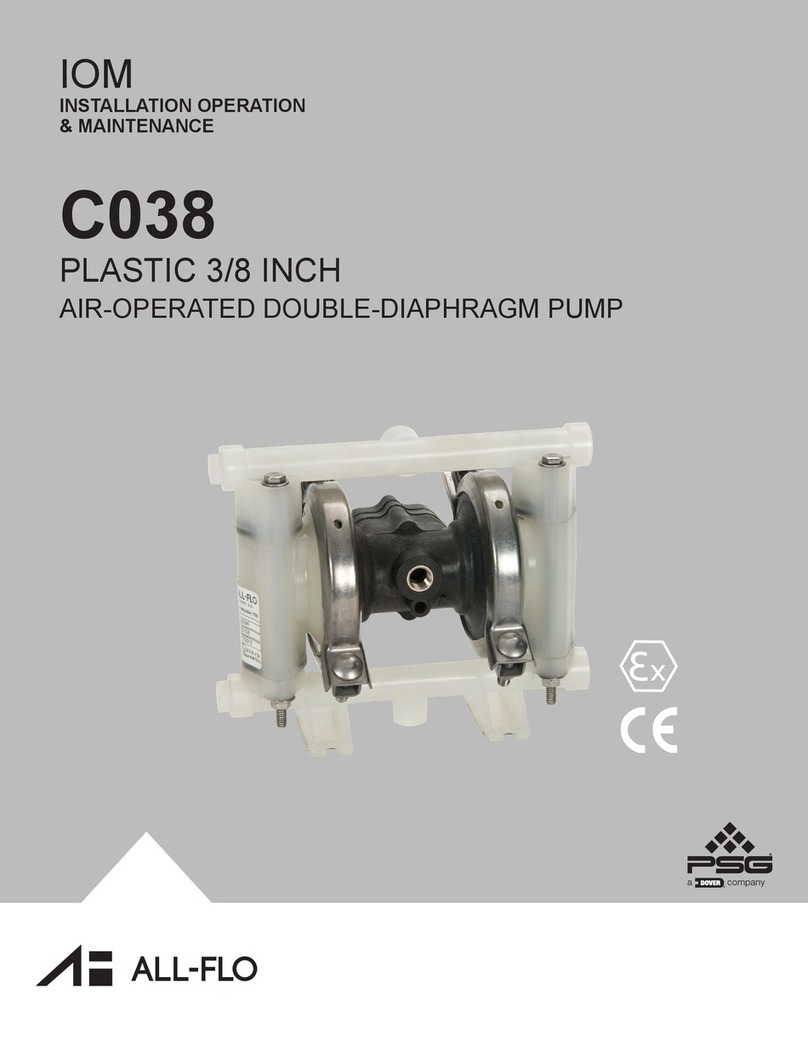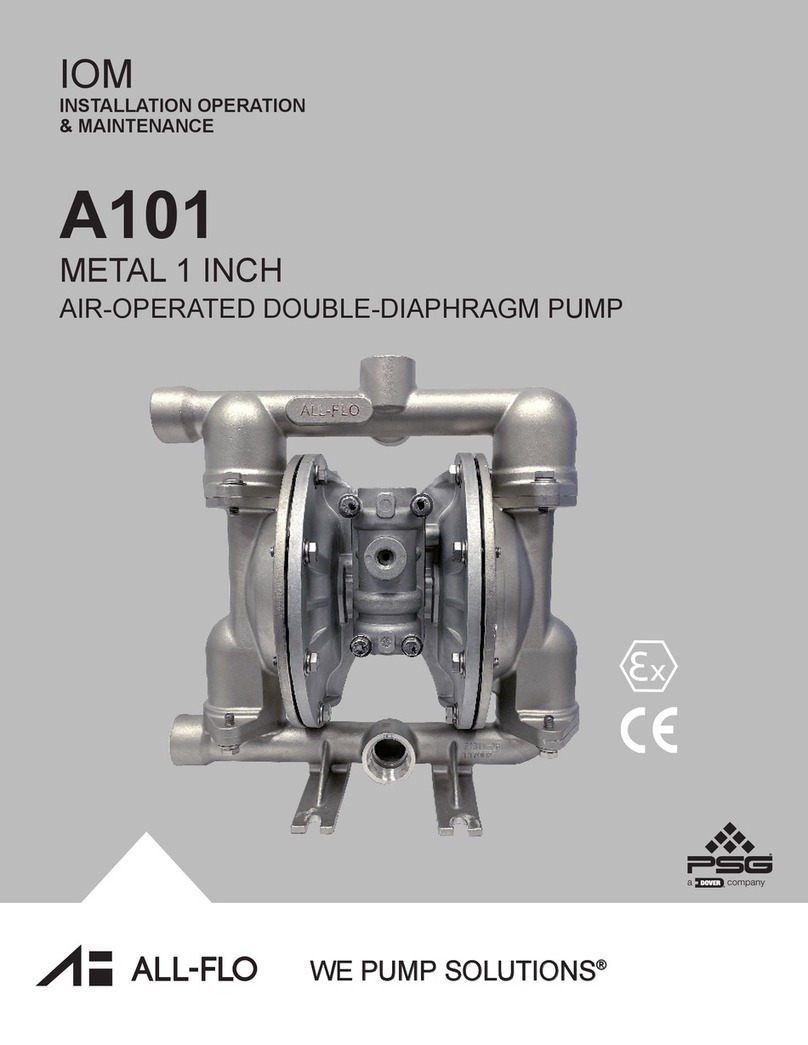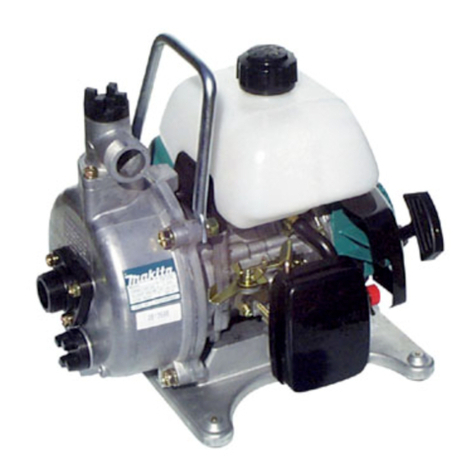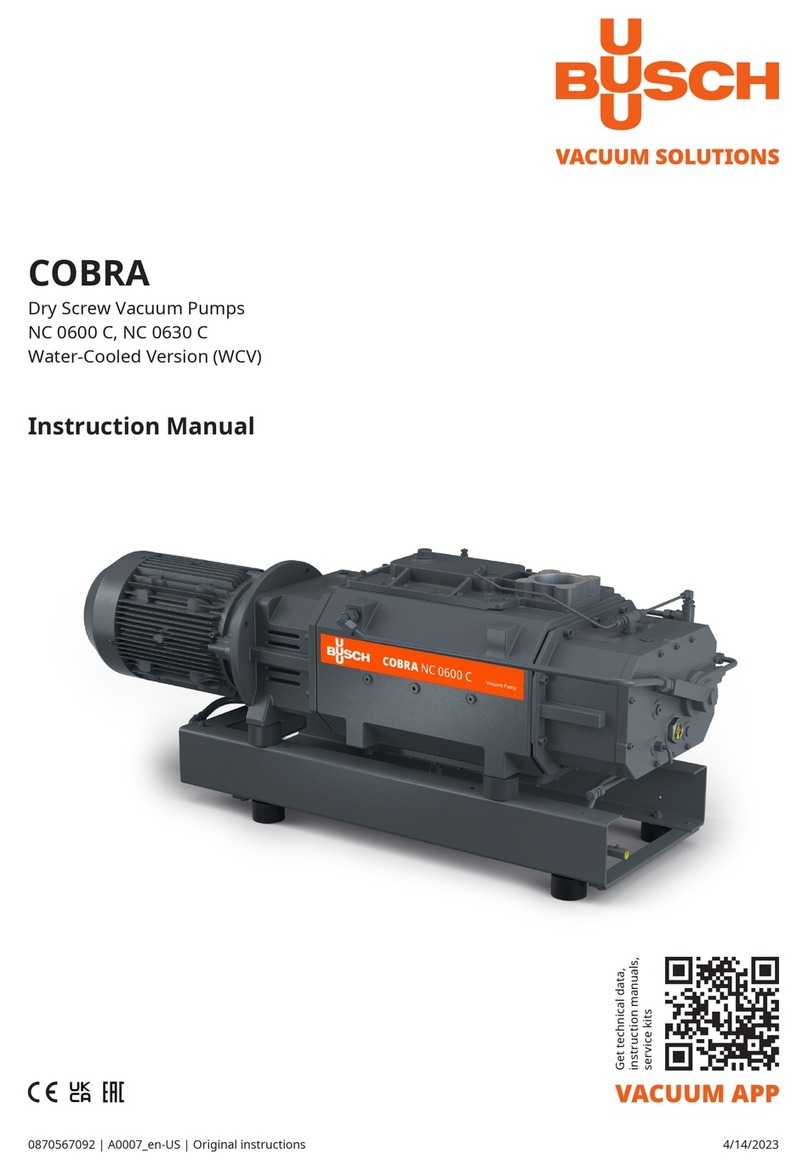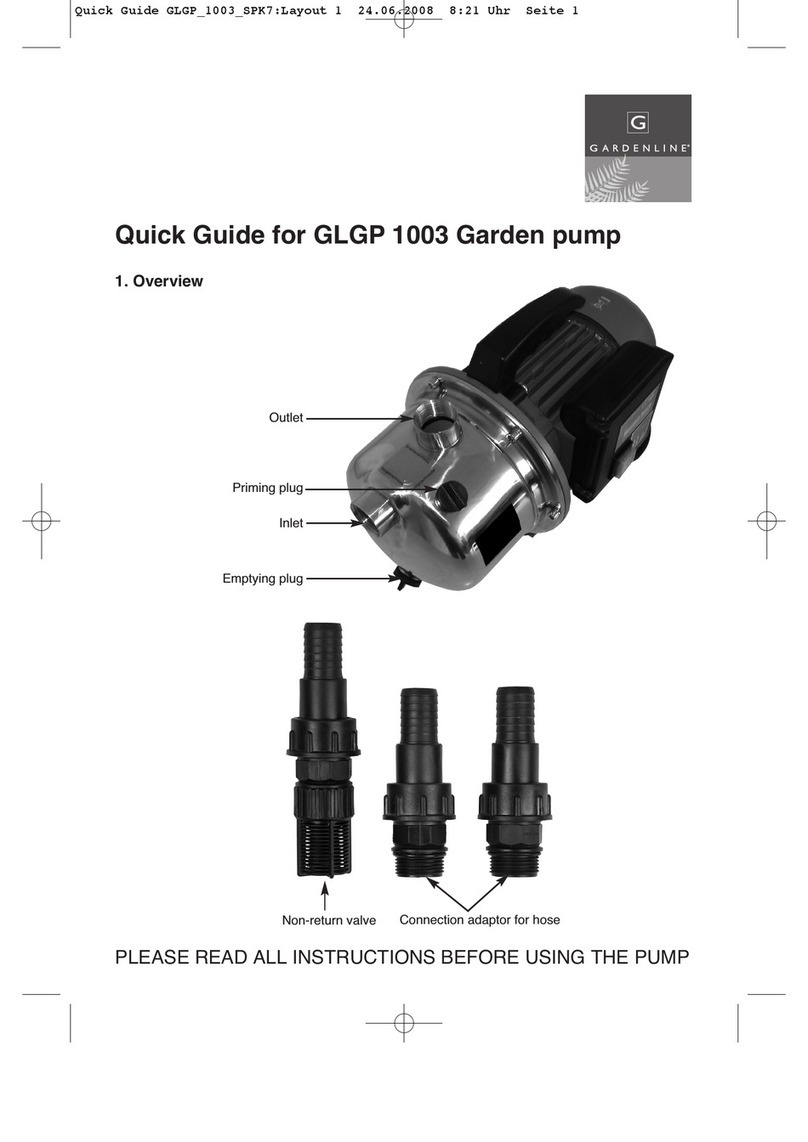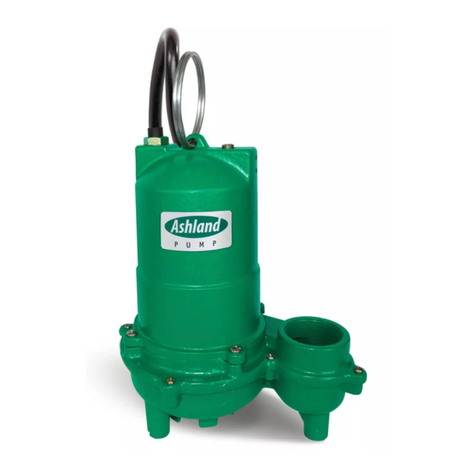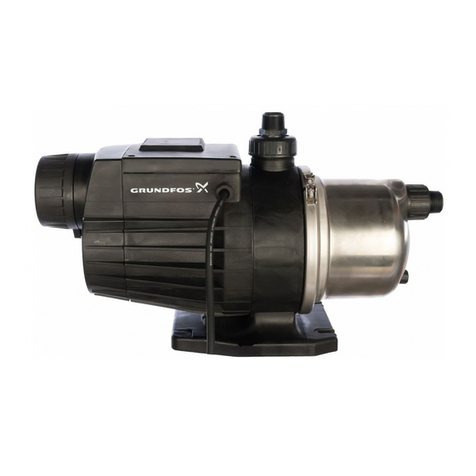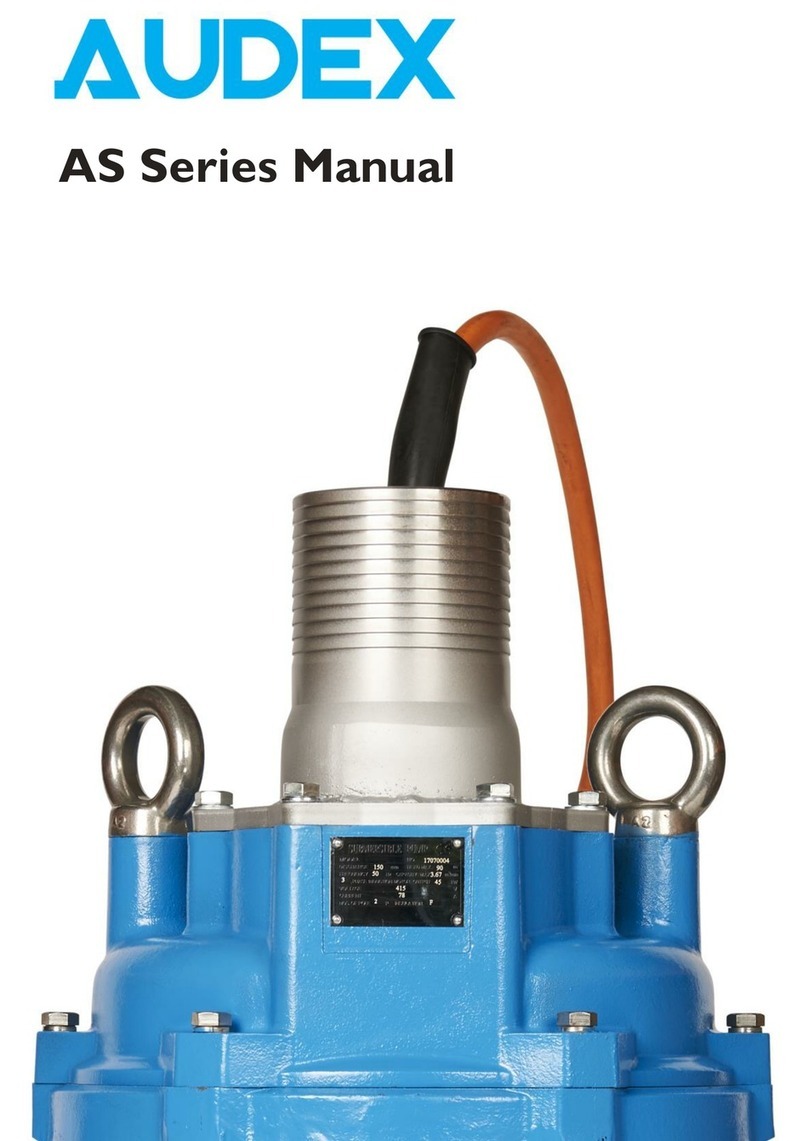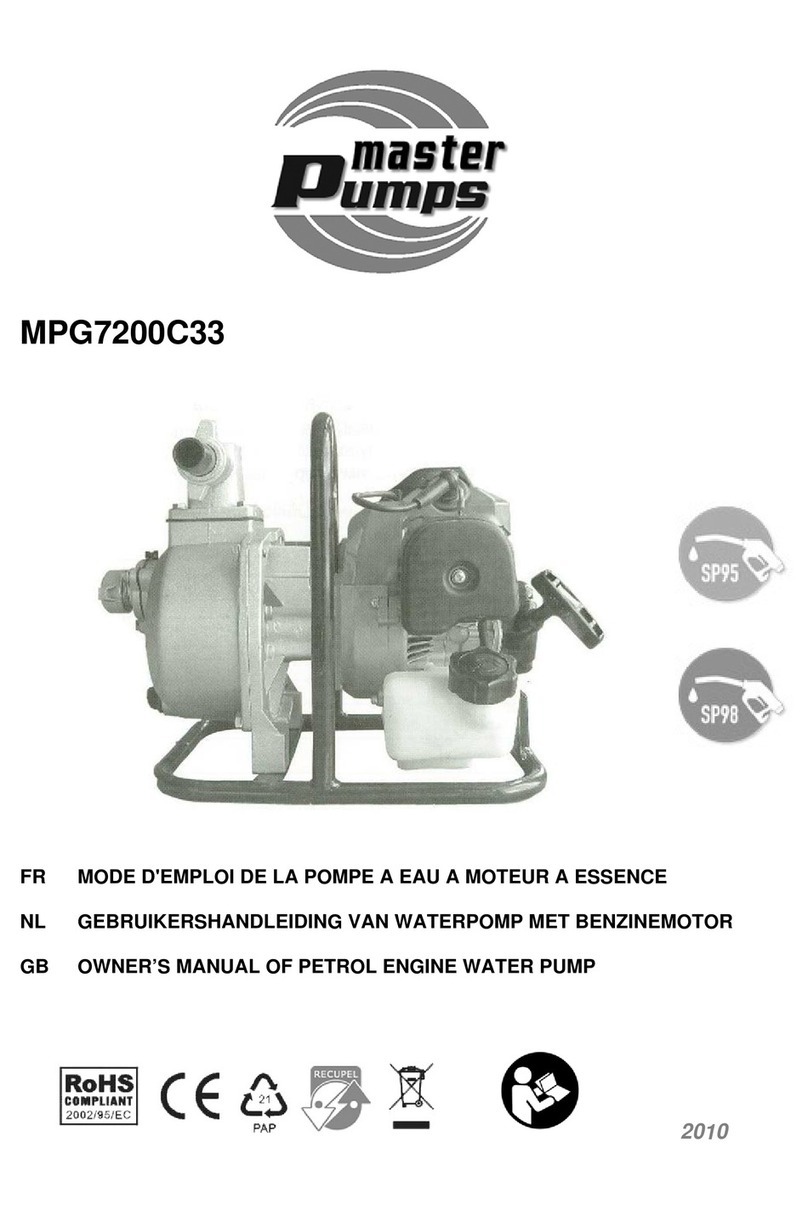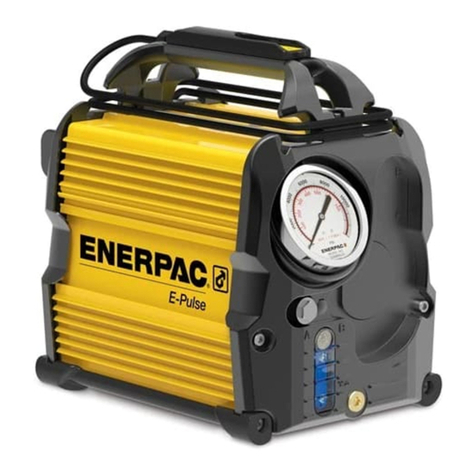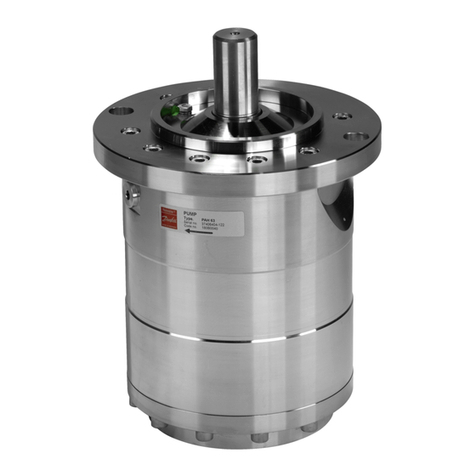All-Flo C038 Manual

all-o.com
C038 - PLASTIC 3/8 INCH AIR OPERATED DOUBLE DIAPHRAGM PUMP
PUMP OPERATIONS & MAINTENANCE MANUAL

all-o.com
TABLE OF
CONTENTS
2
SECTION 1 WARNINGS, DANGERS AND CAUTIONS 3
SECTION 2 MODEL DESIGNATION MATRIX 4
SECTION 3 PRINCIPLES OF OPERATION 5
SECTION 4 DIMENSIONAL DRAWINGS 6
SECTION 5 PERFORMANCE CURVES
RUBBER, TPE AND PTFE DIAPHRAGMS...........................7
SECTION 6 INSTALLATION,
INSTALLATION ...................................................................................... 8-9
TROUBLESHOOTING ..................................................................10
OPERATION......................................................................................11
MAINTENANCE .............................................................................11
SECTION 7 REPAIR AND ASSEMBLY
PUMP WET END REMOVAL............................................ 12-13
AIR VALVE REMOVAL ........................................................ 14-15
TORQUE SPECIFICATIONS.......................................................15
SECTION 8 EXPLODED VIEWS AND PARTS LISTS 16-17
SECTION 9 ELASTOMERS AND REPAIR KITS 18
SECTION 10 WARRANTY AND REGISTRATION 19

all-o.com 3
READ THESE WARNINGS AND SAFETY PRECAUTIONS
PRIOR TO INSTALLATION OR OPERATION. FAILURE TO
COMPLY WITH THESE INSTRUCTIONS COULD RESULT IN
PERSONAL INJURY AND OR PROPERTY DAMAGE. RETAIN
THESE INSTRUCTIONS FOR FUTURE REFERENCE.
WARNING Pump, valves and all containers must
be properly grounded prior to handling flammable fluids
and/or whenever static electricity is a hazard.
WARNING Prior to servicing the pump, ensure that
the air and fluid lines are closed and disconnected. While
wearing personal protective equipment, flush, drain and
process liquid from the pump in a safe manner.
WARNING The TX marking refers to the maximum
surface temperature depending not on the equipment
itself, but mainly on operating conditions. In this case,
the maximum surface temperature depends upon the
temperature of the process fluids.
CAUTION The temperature of the process fluid
and air input must be no more than 36°F (20C) less of the
maximum temperature allowed for the appropriate non-
metallic material. See the list of temperatures below for
each material’s maximum recommended temperature:
Buna-N (Nitrile): 10°F to 180°F (-12C to 82C)
Geolast®: 10°F to 180°F (-12C to 82C)
EPDM: -40°F to 280°F (-40C to 138C)
Santoprene®: -40°F to 225°F (-40C to 107C)
Viton®(FKM): -40°F to 350°F (-40C to 177C)
PTFE: 40°F to 220°F (4C to 104C)
Polyethylene: 32°F to 158°F (0C to 70C)
Polypropylene: 32°F to 180°F (0C to 82C)
PVDF: 0°F to 250°F (-18C to 121C)
Nylon: 0°F to 200°F (-18C to 93C)
Temperature limits are solely based upon mechanical
stress and certain chemicals will reduce the maximum
operating temperature. The allowable temperature range
for the process fluid is determined by the materials in
contact with the fluid being pumped. Consult a chemical
resistance guide for chemical compatibility and a more
precise safe temperature limit. Always use minimum air
pressure when pumping at elevated temperatures.
CAUTION Do not lubricate air supply.
CAUTIONS — READ FIRST!
WARNING
CAUTION
= Hazards or unsafe practices
which could result in severe
personal injury, death or
substantial property damage
= Hazards or unsafe practices
which could result in minor
personal injury, product or
property damage.
CAUTION Do not connect a compressed air source
to the exhaust port of the pump.
WARNING Use only with liquid process fluid.
WARNING Maintenance must not be performed
when a hazardous atmosphere is present.
CAUTION Do not exceed 120 psig (8.3 bar)
air-inlet pressure.
CAUTION Do not exceed 10 psig (0.7 bar)
or 23 ft-H2O suction pressure.
CAUTION Ensure all wetted components are
chemically compatible with the process fluid and the
cleaning fluid.
CAUTION Ensure pump is thoroughly cleaned and
flushed prior to installation into a process line.
CAUTION Always wear Personal Protective
Equipment (PPE) when operating pump.
CAUTION Close and disconnect all
compressed air and bleed all air from the pump
prior to service. Remove all process fluid in a safe manner
prior to service.
CAUTION Blow out all compressed air
lines in order to remove any debris, prior to
pump installation. Ensure that the muffler is properly
installed prior to pump operation.
CAUTION Ensure air exhaust is piped to
atmosphere prior to a submerged installation.
CAUTION Ensure all hardware is set to
correct torque values prior to operation.
SECTION 1

all-o.com
MODEL DESIGNATION MATRIX-CLAMPED PLASTIC
SECTION 2
4
PRODUCT SERIES
FLUID CONNECTION TYPE
LIQUID SECTION
DIAPHRAGM
VALVE/BALL
VALVE SEAT
O-RINGS
SPECIAL (OTHER)
SPECIAL (PORTING)
AIR SECTION
SPECIAL (HARDWARE,
MUFFLER)
C 0 3 8 -1 2 3- 4 5 6 7 - 8 9 10
FLUID CONNECTION TYPE
S = NPS (NPT/BSP)
AIR SECTION
Q = Polypropylene Intermediate-Mechanical Shift
LIQUID SECTION
K = PVDF
P = Polypropylene
Y = Conductive Nylon
DIAPHRAGMS
G = Geolast®
S = Santoprene®
T = PTFE
VALVE/BALL
G = Geolast®
S = Santoprene®
T = PTFE
V = Viton®/FKM
3 = Stainless Steel
VALVE SEAT
K = PVDF
P = Polypropylene
3 = Stainless Steel
O-RINGS
E = EPDM
N = Buna-N
T = PTFE
V = Viton®/FKM
PORTING
S = Default (Suction Right/ Discharge Right)
T = Suction Right / Discharge Left
X = Suction Left / Discharge Right
Y = Suction Left / Discharge Left
K = Suction Bottom / Discharge Center Front
L = Suction Bottom / Discharge Center Rear
N = Suction Bottom / Discharge Right
O = Suction Bottom / Discharge Left
P = Suction Right / Discharge Center Front
Q = Suction Right / Discharge Center Rear
U = Suction Left / Discharge Center Front
V = Suction Left / Discharge Center Rear
SPECIAL OPTION (HARDWARE,
MUFFLER, LUG)
7 = Stainless Steel Hardware, Standard Muffler
8 = Stainless Steel Hardware, Premium Muffler
B = PTFE Coated Stainless Steel Hardware,
Standard Muffler
C = PTFE Coated Stainless Steel Hardware,
Premium Muffler
F = Stainless Steel Hardware, Standard Muffler,
Grounding Lug Installed
G = Stainless Steel Hardware, Premium Muffler,
Grounding Lug Installed
H = PTFE Coated Stainless Steel Hardware,
Standard Muffler, Grounding Lug Installed
I = PTFE Coated Stainless Steel Hardware,
Premium Muffler, Grounding Lug Installed
Note: Equipment must be grounded to achieve
ATEX rating it is recommended to configure
the pump with a grounding lug option for
ATEX applications.
SPECIAL OPTION (OTHER)
0 = Standard
1 = Cycle Counter Valve
2 = Solenoid Adaptor Valve 110/50 Volt AC, 120/60
Volt AC
3 = Solenoid Adaptor Valve 110/50 Volt AC, 120/60
Volt AC Explosion Proof
4 = Solenoid Adaptor Valve 220/50 Volt AC, 240/60
Volt AC, 12 Volt DC
5 = Solenoid Adaptor Valve 220/50 Volt AC, 240/60
Volt AC, 12 Volt DC Explosion Proof
6 = Solenoid Adaptor Valve 220/50 Volt AC, 240/60
Volt AC, 125 Volt DC
7 = Solenoid Adaptor Valve 220/50 Volt AC, 240/60
Volt AC, 125 Volt DC Explosion Proof
8 = Solenoid Adaptor Valve 24 Volt DC
9 = Solenoid Adaptor Valve 24 Volt DC, Explosion
Proof
A = Grease Free (No lubrication assembly)
SIZE
WET END REPAIR KIT
Wet end kits are available and
consist of diaphragms, (back-up
diaphragms if required), balls,
seats and seat O-Rings.
See matrix below.
1
2
6
7
8
9
10
Bold indicates recommended options
DIAPHRAGM
VALVE/BALL
VALVE SEAT
O-RINGS
CWE-038-4567-P
PRODUCT
SERIES
WET END
REPAIR KIT
PUMP SIZE
3
4
5
MATERIAL

all-o.com
PRINCIPLES OF OPERATION
6
The air-valve directs pressurized air behind the diaphragm on the right,
causing the diaphragm on the right to move outward (to the right).
Since both the right diaphragm and the left diaphragm are connected
via a diaphragm rod, when the right diaphragm moves to the right, the
left diaphragm (through the action of the diaphragm rod) moves to the
right also.
When the diaphragm on the left side is moving to the right, it is referred
to as suction stroke. When the left diaphragm is in its suction stroke,
the left suction ball moves upward (opens) and the left discharge ball
moves downward (closes). This action creates suction and draws liquid
into the left side chamber.
The air-valve directs pressurized air behind the left diaphragm, causing
the left diaphragm to move outward (to the left).
Since both the left diaphragm and the right diaphragm are connected
via a diaphragm rod, when the left diaphragm moves to the left, the
right diaphragm (through the action of the diaphragm rod) moves to
the left also.
When the diaphragm on the left side moves outward, the left discharge ball
moves upward (opens) and the left suction ball moves downward (closes).
This causes the liquid to leave the left side liquid outlet of the pump.
Simultaneously, the right diaphragm moves inward (to the left), which
causes the right suction ball to open and the right discharge to close,
which in turn causes suction, drawing liquid into the right chamber.
The process of alternating right suction / left discharge (and vice-versa)
continues as long as compressed air is supplied to the pump.
HOW AN AIR OPERATED DOUBLE
DIAPHRAGM PUMP WORKS
5
SECTION 3

all-o.com 7
3/8” PUMP DIMENSIONS
CLAMPED PLASTIC
SECTION 4
6

all-o.com
PERFORMANCE CURVES
PERFORMANCE CURVE Performance Specications
Max. Flow: 9 gpm (34.0 lpm)
Max. Air Pressure: 120 psi (8.2 bar)
Max. Solids: 1/16” (1.6 mm)
Max. Suction Lift Dry: 10 ft-H2O (3.0 m-H2O)
Max. Suction Lift Wet: 26 ft-H2O (7.9 m-H2O)
Weight Polypropylene
& Conductive Nylon: 3.8 lbs (1.7 kg)
Weight PVDF: 5 lbs (2.3 kg)
Air Inlet: 1/4” FNPT
Liquid Inlet FNPT/FBSPT: 3/8”
Liquid Outlet FNPT/FBSPT: 3/8”
Height: 7.19” (182.6 mm)
Width: 8.55” (217.2 mm)
Depth: 4.82” (122.4 mm)
5
SECTION
*Flow rates indicated on the chart(s) shown were determined by pumping water at flooded suction. For optimum life and performance, pumps should be
specified so that daily operation parameters will fall in the center of the pump performance curve.
AIR CONSUMPTION (SCFM)
7

all-o.com
SECTION 6
INSTALLATION, TROUBLE-
SHOOTING AND MAINTENANCE
INSTALLATION
PIPING
Whenever possible ensure the pump is installed using
the shortest possible pipe lengths with the minimum
amount of pipe fittings. Ensure all piping is supported
independent of the pump.
Suction and discharge piping should not be smaller
than the connection size of the pump. When pumping
liquids of high viscosity, larger piping may be used, in
order to reduce frictional pipe loss.
Employ flexible hoses in order to eliminate the vibration
caused by the pump. Mounting feet can also be used to
reduce vibration effects.
All hoses should be reinforced, non-collapsible and be
capable of high vacuum service. Ensure that all piping
and hoses are chemically compatible with the process
and cleaning fluid.
For processes where pulsation effects should be
reduced, employ a pulsation dampener on the discharge
side of the pump.
For self-priming applications, ensure all connections
are airtight and the application is within the pumps
dry-lift capability. Refer to product specifications for
further details.
For flooded suction applications, install a gate valve
on the suction piping in order to facilitate service.
For unattended flooded suction operation, it is
recommended to pipe the exhaust air above the liquid
source. In the event of a diaphragm failure this will
reduce or eliminate the possibility of liquid discharging
through the exhaust onto the ground.
LOCATION
Ensure that the pump is installed in an accessible
location, in order to facilitate future service and
maintenance.
AIR
Ensure that the air supply is sufficient for the
volume of air required by the pump. Refer to product
specifications for further details. For reliable
operation, install a 5 micron air filter, air-valve and
pressure regulator. Do not exceed the pumps
maximum operating pressure of 120 psig.
REMOTE OPERATION
Utilize a three way solenoid valve for remote
operation. This ensures that air between the solenoid
and the pump is allowed to “bleed off,” ensuring
reliable operation. Liquid transfer volume is estimated
by multiplying displacement per stroke times the
number of strokes per minute
NOISE
Correct installation of the muffler reduces sound
levels. Refer to product specifications for
further details.
SUBMERGED OPERATION
For submersible operation, pipe the air exhaust to
atmosphere
GROUNDING THE PUMP
Loosen grounding screw and install a grounding wire.
Tighten grounding screw. Wire size should be a 12
gauge wire or larger. Connect the other end of the wire
to a true earth ground. Equipment must be grounded
to achieve ATEX rating and it is recommended to
configure the pump with a grounding lug option.
8

all-o.com
SUGGESTED INSTALLATION
This illustration is a generic
representation of an air operated
double-diaphragm pump.
9

all-o.com
10
TROUBLESHOOTING
PROBLEM EFFECT/SOLUTION
Pump Will Not Cycle
Discharge line closed or plugged
Discharge filter blocked
Check valve stuck
Air filter blocked
Air supply valve closed
Air supply hooked up to muffler side of pump
Compressor not producing air or turned off
Muffler iced or blinded
Diaphragm ruptured
Plant air supply line ruptured
Air valve wear/debris
Pilot sleeve wear/debris
Diaphragm rod broken
Diaphragm plate loose
Pumped Fluid Coming Out of Muffler
Diaphragm ruptured
Diaphragm plate loose
Inlet liquid pressure excessive (above 10 psig)
Pump Cycles but no Flow
Inlet strainer clogged
Suction valve closed
Suction line plugged
No liquid in the suction tank
Suction lift excessive
Debris stuck in valves
Excessive wear of check valves
Air leak on suction side with suction lift
Pump Cycles with Closed Discharge Valve
Debris stuck in check valve
Excessive wear of check valves
Pump Running Slowly/Not Steady
Air compressor undersized
Leak in air supply
Air-line, filter regulator or needle valve undersized
Muffler partially iced or blinded
Air valve gasket leak or misalignment
Air valve wear/debris
Pilot sleeve wear/debris
Liquid fluid filter blocked
Pump may be cavitating, reduce speed of operation
Suction strainer clogged
Pump Will Not Prime
Air leak in suction pipe
Air leak in pump manifold connections
Suction strainer and lines clogged
Excessive lift conditions
Check valve wear
Debris in check valve

all-o.com
OPERATION
The Air-Operated Double Diaphragm Pump requires
a minimum of 20 psig of air to operate, with some
variation according to diaphragm material. Increasing
the air pressure results in a more rapid cycling of the
pump and thus a higher liquid flow rate. In order to not
exceed 120 psig of inlet air pressure, and for accurate
control of the pump, it is suggested to use a pressure
regulator on the air inlet.
An alternate means of controlling the flow-rate of the
pump is to use an inlet air valve and partially open or
close accordingly. When the air valve is completely in
the closed position, the pump will cease to operate.
A third method of controlling the flow rate of the
pump is to use a liquid discharge valve. Closing the
liquid discharge valve will cause a decrease in the
flow rate since the pump will operate against a higher
discharge pressure.
Solenoid control of the inlet air may also be used in
order to facilitate remote operation. A three way
solenoid valve is recommended, in order to allow the
air to “bleed off” between the solenoid and the pump.
Do not use valves for flow control on the suction side
of the pump. (Closing or partially closing a liquid
suction valve restrict the suction line and may cause
damage to the diaphragms.) Suction strainers may
be employed to reduce or eliminate larger solids, but
routine maintenance is necessary in order to prevent
a restriction on the suction.
MAINTENANCE
Due to the unique nature of each application, periodic
inspection of the pump is the best method to determine
a proper maintenance schedule. A record should be
kept of all repairs made to an installed pump. This will
serve as the best predictor of future maintenance.
Typical maintenance involves replacing of “wear-
parts” such as the diaphragms, balls, valve seats and
O-rings. Proper maintenance can ensure trouble-free
operation of the pump. Refer to repair and assembly
instructions for further details.
WARNING Maintenance must not be performed
when a hazardous atmosphere is present.
MAINTENANCE SCHEDULE
WEEKLY (OR DAILY)
Make a visual check of the pump. If pumped fluid is
leaking out of the pump, pipe fittings or muffler turn
off pump and schedule maintenance.
EVERY THREE MONTHS
Inspect fasteners and tighten any loose fasteners to
recommended torque settings.
Schedule pump service based on pump’s service
history.
11

all-o.com
SECTION 7
12
REPAIR AND ASSEMBLY
PUMP WET END REMOVAL
WARNING Prior to servicing the pump, ensure that the air
and fluid lines are closed and disconnected. While wearing personal
protective equipment, flush, drain and process liquid from the
pump in a safe manner.
WARNING Maintenance must not be performed when a hazardous
atmosphere is present.
TOOLS NEEDED
1) Two Wrenches, 7/16 Inch
2) One Wrench, ½ Inch
3) Two Wrenches, ¾ Inch
4) One Screwdriver, Straight Blade
STEP 1
Using the 7/16 inch wrenches
remove four “Hex-Head Cap
Screws”, eight “Washers” and four
“Hex Nuts” from the “Discharge
Manifold”, “Outer Chamber” and
“Suction Manifold”.
STEP 4
Set the “Intermediate” with
attached “Outer Chambers” aside.
STEP 2
Remove the “Discharge Manifold”.
STEP 5
Remove the “Suction Manifold”.
STEP 3
Remove the “O-Ring”, “Valve Seat”
and “Ball” from the “Discharge
Manifold”.
STEP 6
Remove the “O-Ring”, “Valve
Seat” and “Ball” from the “Outer
Chambers”.

all-o.com 13
STEP 7
In order to remove both “Outer
Chambers”, using the ½ inch
wrench, remove the “Chamber
Clamps” from each side of the
“Intermediate”.
STEP 10
Placing the ¾ inch wrench on the remaining “Outer Diaphragm Plate” and the straight blade screwdriver on
the “Diaphragm Rod”, remove the remaining “Outer Diaphragm Plate”, “Diaphragm” and “Inner Diaphragm
Plate” (washer) from the other side of the pump.
Note PTFE diaphragms also contain an O-Ring on the “Intermediate” side.
STEP 8
Remove both “Outer Chambers”
from the “Intermediate”.
STEP 9
Using two ¾ Inch wrenches,
remove “Outer Diaphragm
Plate”, “Diaphragm” and “Inner
Diaphragm Plate” (washer) from
one side of the pump.
PUMP WET END ASSEMBLY
To assemble the wet end of the pump, reverse the order of disassembly.
Ensure all hardware is fastened in accordance with torque specifications
(see page 15). Inverting one of the diaphragms during reassembly will
facilitate ease of assembly.
When positioning clamps use soapy water or a compatible lubricating
spray on the inside of band clamps to aid assembly. Tap with a mallet
on the outside of clamp to help position the clamp while tightening the
fasteners. The band clamp fasteners and cap screws are stainless steel.
To prevent galling always apply an anti-seize compound to the thread.
Note: When using pumps built with PTFE O-Rings, always replace with
new PTFE O-Rings, since the original O-Rings may not reseal the pump.

all-o.com
14
AIR VALVE REMOVAL
REPAIR AND ASSEMBLY
STEP 1
Rotate the “Intermediate” to the
exhaust muffler side.
STEP 2
Using the 1/4 wrench (or straight
blade screwdriver) remove six
“Screws” from the “Muffler Plate”.
Note the center two “Screws”
should not be removed.
STEP 3
Stabilize the “Air Valve”
mechanism to prevent it from
shifting. Move the mechanism
to the “Hard Stop” position. See
Step 4-5.
TOOLS NEEDED
1) One Wrench, ¼ Inch
2) One Screwdriver, Straight Blade
3) One Hex Key, 7/64 Inch (3mm)
WARNING Prior to servicing the pump, ensure that the air
and fluid lines are closed and disconnected. While wearing personal
protective equipment, flush, drain and process liquid from the
pump in a safe manner.
WARNING Maintenance must not be performed when a hazardous
atmosphere is present.
STEP 4 STEP 5 STEP 6
Remove the “Air Valve” from
the “Intermediate”. Set the
mechanism to the the “Hard Stop”
position.
CAUTION: Only one side of the valve mechanism has a hard-stop.
Shifting the mechanism past its operating position can cause the spring
to pop free and internal components to come loose. Use caution when
shifting the mechanism manually.

all-o.com 15
STEP 7
Note the way the mechanism
threads the “Rod” and “Rod
Guide”.
STEP 8
To reinstall the “Air Valve”, the
spring mechanism should be on
the side with the hard-stop. Prop
the spring retainer into a neutral
position by inserting a 7/64” or
3mm hex key as shown between
the hard-stop and the spring
retainer.
STEP 9
Adjust the “Rod Guide” towards
the center of the “Intermediate”.
Slide the “Air Valve” into place
so that the forks slide into the
rod guide. Pull the hex key free
and push the “Air Valve” fully
into place. Reinstall the “Muffler
Plate” screws.
AIR VALVE ASSEMBLY
To assemble the air valve, reverse the order of disassembly. During
assembly, ensure that the open side of the lip-seals are both facing
each other inward. Lubrication of the air valve assembly, with a non-
synthetic lubricant, is recommended. Magna-Lube or Magna-Plate
are recommended for assembly lubrication (see detailed parts list for
ordering information).
Note: If the lip-seals are installed incorrectly, they will be unable to rotate.
TORQUE SPECIFICATION CHART
RECOMMENDED TORQUE SPECIFICATIONS
3/8” Pumps
Manifold Bolts 10 in-lbs (1.13 N-m)
Band Clamps (Chambers) 13.3 ft-lbs (18.0 N-m)
Air Valve Screws 12 in-lbs (1.35 N-m)
Diaphragm Plates 40 in-lbs (4.5 N-m)
Note: Always torque the chamber clamps prior to the manifold bolts. When reassembling, loosely tighten all
external fasteners adjusting and aligning gradually, in an alternating fashion, tighten to torque requirements
listed above.
Note: When using pumps built with PTFE O-Rings, always replace with new PTFE O-Rings, since the original
O-Rings may not reseal the pump.

all-o.com
16
EXPLODED VIEW & PARTS LIST
C038-SQ*-****-*** CLAMPED PLASTIC
SECTION 8

all-o.com
PARTS LIST - CLAMPED PLASTIC
C038-SQ*-****-***
ITEM DESCRIPTION QTY PUMP MODEL PART NO. MATERIAL
1 ROD GUIDE 1 ALL MODELS 12807-31 Acetal
2 AIR VALVE ASSEMBLY 1 ALL MODELS 40380-54 Various
3 HEX NUT (1/4” – 20) 4 ALL MODELS (NON-PTFE COATED) 12600-26 Stainless Steel
4 FLAT WASHER 8 ALL MODELS (NON-PTFE COATED) 12300-26 Stainless Steel
5 DIAPHRAGM ROD 1 ALL MODELS 10316-26 Stainless Steel
6 CLAMP Complete with fasteners 2 ALL MODELS (NON-PTFE COATED) 12913-26 Stainless Steel
7 HEX HUT (5/16” - 18) 4 ALL MODELS (NON-PTFE COATED) 12601-26 Stainless Steel
8 CARRIAGE BOLT (5/16” x 1-1/2”) 4 ALL MODELS (NON-PTFE COATED) 12509-26 Stainless Steel
9 SCREW (#8 x 1-3/4”) 6 ALL MODELS (NON-PTFE COATED) 12548-26 Stainless Steel
10 PIPE PLUG, 3/8” NPT 2 C038-SPP-****-*** 12206-40 Polypropylene
C038-SPY-****-*** 12206-42 Nylon
C038-SPK-****-*** 12206-56 PVDF
11 SUCTION MANIFOLD 1 C038-SPP-****-*** 10570-40 Polypropylene
C038-SPY-****-*** 10570-46 Conductive Nylon
C038-SPK-****-*** 10570-56 PVDF
12 ORING, VALVE SEAT 4 C038-SP*-***N-*** 11938-11 Nitrile
C038-SP*-***E-*** 11938-15 EPDM
C038-SP*-***T-*** 11938-17 PTFE
C038-SP*-***V-*** 11938-82 Viton®/FKM
16 OUTER CHAMBER 2 C038-SPP-****-*** 10701-40 Polypropylene
C038-SPY-****-*** 10701-46 Conductive Nylon
C038-SPK-****-*** 10701-56 PVDF
17 OUTER DIAPHRAGM PLATE 2 C038-SPP-****-*** 11201-40 Polypropylene
C038-SPY-****-*** 11201-46 Conductive Nylon
C038-SPK-****-*** 11201-56 PVDF
18 DIAPHRAGM PTFE ONLY 2 C038-SP*-T***-*** 11401-59 PTFE
19 DIAPHRAGM 2 C038-SP*-G***-*** 10601-19 Geolast®
C038-SP*-S***-*** 10601-23 Santoprene®
20 DISCHARGE MANIFOLD 1 C038-SPP-****-*** 10571-AF-40 Polypropylene
C038-SPY-****-*** 10571-AF-46 Conductive Nylon
C038-SPK-****-*** 10571-AF-56 PVDF
21 INNER DIAPHRAGM PLATE 2 ALL MODELS 11101-25 Plated Steel
22 INTERMEDIATE 1 ALL MODELS 11503-60 Polypropylene
23 CAP SCREW 4 ALL MODELS (NON-PTFE COATED) 12515-26 Stainless Steel
24 MUFFLER 1 ALL MODELS 13008-00 Polypropylene
25 ORING Diaphragm, PTFE ONLY 2 C038-SP*-T***-*** 11942-11 Nitrile
26 LIP SEAL 2 ALL MODELS 12005-76 Nitrile
27 BALL CAGE 4 C038-SPP-****-*** 10914-40 Polypropylene
C038-SPY-****-*** 10914-46 Conductive Nylon
C038-SPK-****-*** 10914-56 PVDF
28 VALVE SEAT 4 C038-SP*-**3*-*** 10913-26 Stainless Steel
C038-SP*-**P*-*** 10913-40 Polypropylene
C038-SP*-**K*-*** 10913-56 PVDF
29 BALL 4 C038-SP*-*V**-*** 11000-13 Viton®/FKM
C038-SP*-*G**-*** 11000-19 Geolast®
C038-SP*-*S**-*** 11000-23 Santoprene®
C038-SP*-*T**-*** 11000-45 PTFE
* Any Character
17

all-o.com
18
SECTION
9
ELASTOMERS & REPAIR KITS
VITON®
is an elastomer with good corrosion resistance to a
wide variety of chemicals. Temperature range -40°F
to 350°F (-40C to 177C).
PTFE (POLYTETRAFLUOROETHYLENE)
is a thermoplastic polymer that is inert to most
chemicals. Similar in chemical resistance to Teflon®.
Temperature range 40°F to 220°F (4C to 104C).
Most of the above elastomers are available in FDA
approved formulations.
BUNA-N (NITRILE)
is a general purpose elastomer used with water and
many oils. Temperature range 10°F to 180°F (-12C to
82C).
GEOLAST®
is an injection molded thermoplastic material with
characteristics similar to Nitrile. Has excellent
abrasion resistance. Temperature range 10°F to 180°F
(-12C to 82C).
EPDM
is a general purpose elastomer with good resistance
to many acids and bases. Temperature range -40°F
to 280°F (-40C to 138C).
SANTOPRENE®
is an injection molded material with characteristics
similar to EPDM. Has excellent abrasion resistance.
Temperature range -40°F to 225°F (-40C to 107C).
FKM
is an elastomer with good corrosion resistance to
a wide variety of chemicals. Similar in chemical
resistance to Viton®. Temperature range -40°F
to 350°F (-40C to 177C).
WETTED ELASTOMERS
II 2 GD c TX
Warning: The TX marking refers to the maximum surface temperature depending not on the equipment itself, but mainly
on operating conditions. In this case, the maximum surface temperature depends upon the temperature of the process
fluids.
Viton®is a registered trademark of DuPont Performance Elastomers L.L.C.
Geolast®is a registered trademark of ExxonMobil Chemical Co.
Santoprene®is a registered trademark of ExxonMobil Chemical Co.
Teflon®is a registered trademark of DuPont Performance Elastomers L.L.C.
Hytrel®is a registered trademark of DuPont Performance Elastomers L.L.C.
Magnalube®is a registered trademark of Carleton-Stuart Corp.

all-o.com 19
WARRANTY. All All-Flo products shall be covered by the standard All-Flo Limited Warranty in effect at the time
of shipment. This warranty (which may be modified by All-Flo at any time) provides:
MATERIALS SOLD ARE WARRANTED TO THE ORIGINAL USER AGAINST DEFECTS IN WORKMANSHIP OR
MATERIALS UNDER NORMAL USE (RENTAL USE EXCLUDED) FOR FIVE YEARS AFTER PURCHASE DATE. ANY
PUMP WHICH IS DETERMINED TO BE DEFECTIVE IN MATERIAL AND WORKMANSHIP AND RETURNED TO
ALL-FLO, SHIPPING COSTS PREPAID, WILL BE REPAIRED OR REPLACED AT ALL-FLO’S OPTION. CUSTOMER
SHALL NOTIFY ALL-FLO IN WRITING WITHIN 30 DAYS OF ANY CLAIMED DEFECTS. NO MATERIALS CAN BE
RETURNED WITHOUT THE PRIOR CONSENT OF ALL-FLO, AND IF APPROVED SHALL BE RETURNED TO
ALL-FLO FREIGHT PREPAID. ALL-FLO’S LIABILITY FOR ANY BREACH OF THIS WARRANTY SHALL BE
LIMITED TO EITHER REPLACEMENT OF THE MATERIALS OR, AT ALL-FLO’S SOLE OPTION, THE REFUND OF
THE PURCHASE PRICE. ALL-FLO SHALL NOT BE HELD LIABLE FOR ANY INCIDENTAL OR CONSEQUENTIAL
DAMAGES CAUSED BY BREACH OF THIS WARRANTY. THIS EXCLUSION APPLIES WHETHER SUCH DAMAGES
WERE SOUGHT BASED ON BREACH OF WARRANTY, BREACH OF CONTRACT, NEGLIGENCE, STRICT LIABILITY
IN TORT, OR ANY OTHER LEGAL THEORY. FURTHER, ALL-FLO SHALL NOT BE LIABLE FOR LOSSES, DELAYS,
LABOR COSTS, OR ANY OTHER COST OR EXPENSE DIRECTLY OR INDIRECTLY ARISING FROM THE USE OF
MATERIALS. ALL-FLO’S LIABILITY IS EXPRESSLY LIMITED TO THE REPLACEMENT OR REPAIR OF DEFECTIVE
GOODS, OR THE TOTAL VALUE OF SUCH GOODS. THIS WARRANTY IS IN LIEU OF ALL OTHER WARRANTIES,
WHETHER EXPRESS, IMPLIED, OR ORAL INCLUDING THE IMPLIED WARRANTY OF MERCHANTABILITY, ANY
IMPLIED WARRANTY OF FITNESS FOR A PARTICULAR PURPOSE, AND ANY IMPLIED WARRANTIES
OTHERWISE ARISING FROM A COURSE OF DEALING OR TRADE. All-Flo will not, in ANY event, be liable for any
loss of profit, interruption of business or any other special, consequential or incidental damages suffered or
sustained by Customer. All-Flo’s total maximum liability to the customer in respect of sale of materials or
services rendered by All-Flo is limited to the total monies received by All-Flo from the customer for the
particular. Materials described in Customer’s order.
All-Flo does not warrant any part or component that it does not manufacture, but will assign to the original
end-user purchaser of any warranty received by it from the manufacturer, to extent such pass through is
permitted by the manufacturer.
REGISTRATION FORM
Pump Model _________________________________ Pump Serial Number __________________________
Company Name _____________________________________________________________________________
Name ______________________________________ Email _______________________________________
Phone # ____________________________ City _____________________ State ______ Zip ___________
Qty of Pumps ________________________________ Fluid Pumping _______________________________
How did you hear about us? Existing All-Flo user,
Web, Distributor, Magazine…
______________________________________________________
www.all-flo.com/registration-form.html
WARRANTY AND REGISTRATION
MAIL TO:
All-Flo Pump Co. | Attn: Product Registration
PO BOX 1870 | Mentor, OH 44061
Scan QR code and
complete form
on mobile phone
or visit
10
SECTION

all-o.com
7750 Tyler Blvd.
Mentor, Ohio 44060
phone: 440.354.1700
fax: 440.354.9466
all-o.com
13966-C038-P_Rev_A1
ALL-FLO is committed to the pursuit of designing and manufacturing the
highest quality product available to industry. Since the beginning in 1986,
All-Flo engineers have used their extensive knowledge of today’s engineered
materials, advanced air system logic and manufacturing techniques to
develop the superior group of lube-free, air-operated diaphragm pumps
found in this catalog. Every pump is performance engineered and quality
built to provide trouble-free service under the toughest conditions.
This manual suits for next models
1
Table of contents
Other All-Flo Water Pump manuals
Popular Water Pump manuals by other brands

Buck
Buck BioAire B520 instruction manual

EBARA
EBARA DLU Operating instructions, installation & maintenance manual
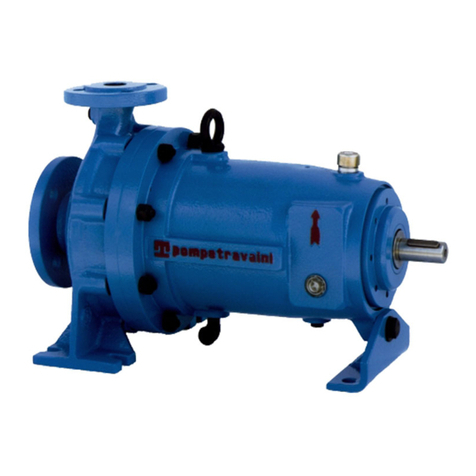
Pompetravaini
Pompetravaini TCK Series INTEGRATIVE NOTES TO THE OPERATING MANUAL

PCB Piezotronics
PCB Piezotronics 108A04 Installation and operating manual
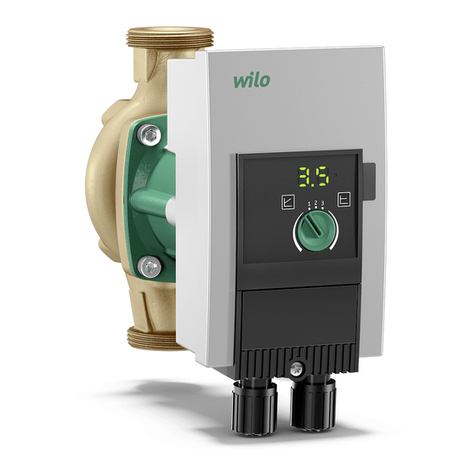
Wilo
Wilo Yonos MAXO Installation and operating instructions

Elektra Beckum
Elektra Beckum Submersible Well Pump TP 7000 S operating instructions

